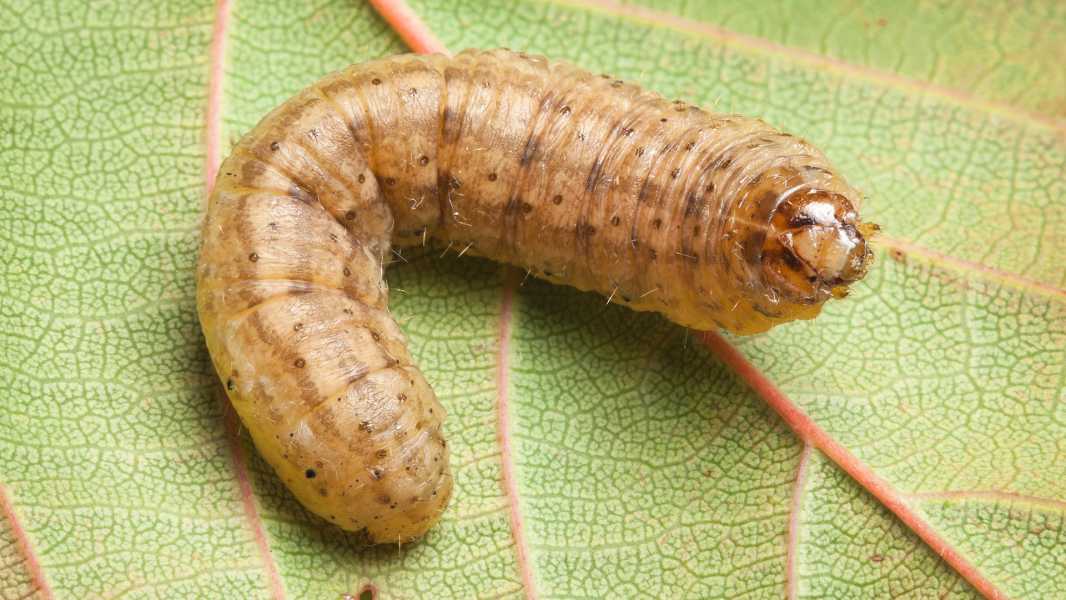
Close-up of a caterpillar. (Image credit: Scenics & Science via Alamy Stock Photo)
The pest known as fall armyworm has spread across the globe, posing a threat to food security in more than 80 countries. But new research has identified Australian fungi that parasitise the worms and could hold the key to containing the devastating pest.
The fall armyworm (Spodoptera frugiperda) is a species of gray moth native to tropical Central and South America, and in recent years has become one of the most destructive pests of corn worldwide. Adults are able to migrate long distances via global trade and wind currents, and are now found in Europe, Asia, Africa, and Australia.
The longest recorded flight by caterpillars was from Mississippi to southern Canada, covering 870 miles (1,400 kilometers) in just 30 hours, zoologist Johnny van den Berg of Northwestern University in South Africa, who was not involved in the study, told Live Science in an email.
A single female S. frugiperda can lay between 1,000 and 2,000 eggs in her lifetime. The offspring develop quickly: after laying eggs on corn plants, the larvae reach a size large enough to cause serious damage to leaves in just a week, van den Berg explained. The worm-like larvae are also difficult to detect because they are small and hard to see — often farmers don’t realize the presence of the fall armyworm until crop damage is already evident.
These pests primarily feed on corn, but can also damage a variety of other crops, including wheat, cotton, sugarcane, and vegetables.
Farmers have tried to control the fall armyworm with pesticides, but the pests can quickly develop resistance to chemicals. So scientists and farmers are exploring alternative approaches to combating the fall armyworm problem, such as introducing viruses that target the worms, using plant extracts, and developing resistant varieties. However, these methods vary in their viability at scale and cost effectiveness.
Now new research from Australia's Department of Primary Industries (DPI) reports a promising breakthrough: Australian fungi and bacteria are attacking fall armyworm.
Researchers have found up to five species of fungi that can kill fall armyworm within 24 hours of exposure. For example, the fungus Nomuraea rileyi attaches to the surface of fall armyworm, coating it before spreading inside the larva's body. It then consumes the fall armyworm from the inside out.
The researchers shared their findings at a fall armyworm meeting in March and with Australian journalists. The results have not yet been published in a peer-reviewed journal.
In another study, another group of scientists found additional species of fungi that were able to kill corn rootworms, as well as some types of bacteria. Some strains of the fungus Beauveria bassiana killed about 75% of corn rootworms within 48 hours.
The research team doesn’t yet fully understand how B. bassiana kills the caterpillars, study co-author Wee Teck Tay, a biologist at the Commonwealth Scientific and Industrial Research Organisation (CSIRO) in Australia, told Live Science. They speculate that it may be due to a toxin the fungus produces that attacks the caterpillars’ guts, creating pores in the gut cells, likely causing the caterpillars to starve, become infected with blood poisoning, or both.
CSIRO researchers say their work is still in its early stages and more research is needed before the drug can be used in practical pest control applications.
“The use of biological controls… can be very effective,” Tay said. However, using fungi “will require careful planning to manage resistance,” he added, because, as with traditional insecticides, improper use of fungi can lead to
Sourse: www.livescience.com





